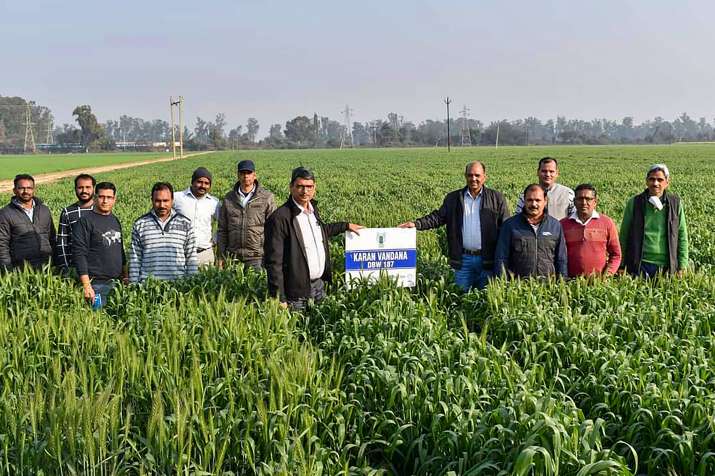[ad_1]
in temperature If the current increase continues in March, rabi wheat production will be affected and the yield will be equal to or slightly lower than last year’s low. It has been said in a report. In Uttar Pradesh, which contributes about 30 per cent to the production of wheat, relatively good yields are expected in the eastern part due to timely sowing after the kharif paddy harvest. Research agency CRISIL on Wednesday said western Uttar Pradesh may see a slight decline due to late sowing if higher temperatures persist in March. The late sown lot in Punjab and Haryana has reached the flowering stage, while the early sown lot is now in the milking stage and higher temperatures are detrimental to grain formation at both these stages, the report said.
There may be less effect in Bihar
Both the states contribute 25 per cent of the annual wheat production. Similarly, wheat has been sown early in Bihar and the crop is in the grain formation/maturity stage, which may be less affected by heat. The report states that although it is difficult to manage such abiotic factors very effectively, farmers in Punjab, Haryana and western UP are already doing so by spraying crop nutrients such as bio-stimulants and specialized fertilizers. Which should help them combat the heat wave to some extent.
The horticulture sector gradually transformed into an organized industry.
Agriculture Minister Narendra Singh Tomar on Wednesday said that the horticulture sector is being considered as the engine of economic growth and the sector is gradually becoming an organized industry involving seed trading, value addition and exports. Inaugurating the four-day National Horticulture Fair ‘online’ in Bengaluru, Tomar said the horticulture sector plays a vital role in doubling farmers’ income and providing essential nutritional security. Tomar said, “A rapid increase in the production and availability of horticulture crops will help in bridging the gap between the nutritional security of the country.” According to an official statement, he said that the country’s horticulture production in the year 1950-51 India’s food grain production has increased 13 times from 25 million tonnes to 331 million tonnes during 2020-21, which is more than the food grain production. He said, “This sector is being considered as a driver of economic growth and this sector is gradually becoming an organized industry involving seed trading, value addition and exports.” In the 2016 budget, Rs 2,200 crore has been allocated for the development of the horticulture sector.
[ad_2]
Source link
